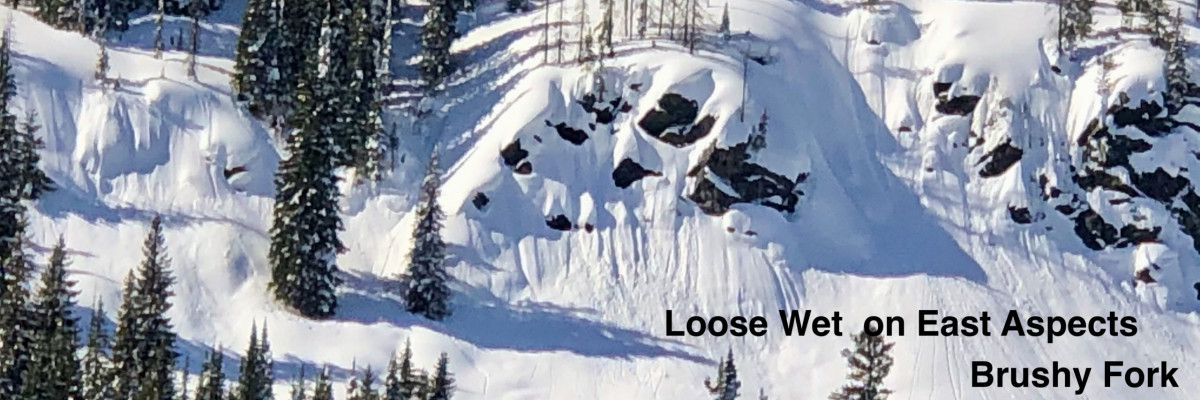The avalanche danger in the west central Montana backcountry is MODERATE. Evaluate snow and terrain carefully.
Good Morning. This is Travis Craft with the West Central Montana Avalanche Center advisory on Thursday, March 4, 2021. This advisory is sponsored by the Trail Head. This advisory does not apply to operating ski areas and expires at midnight tonight. The USDA Forest Service is solely responsible for its content.
Weather and Snowpack
Mountain temperatures range from 19 to 29 degrees this morning. The snowpack refroze overnight. Winds are expected to be light, and mountain temperatures are expected to rise into the 40’s at higher elevations.
Yesterday, we saw a natural avalanche on the Jan 13 crust that happened on an NW face at 7400 feet in the Brushy Fork in the last 48 hours. On an east ridge in the central Bitterroot, we had a huge collapse at 7500 feet. In Bass Creek, Swans, Missions, and central Bitterroot, we saw lots of loose wet activity on slopes exposed to the sun. East, west, and south aspects were releasing loose wet debris. We observed glide cracks forming in the Missions, Swans, and the central Bitterroot. We saw 2 glide avalanches in the central Bitterroot that released on granite slabs. Cornices are starting to drip and sag in all ranges.
Backcountry travel this week is about timing and terrain choices. Avoid being under cornices and stay far away from their edges. When the roller balls show up, or you start punching into the snow, choose shadier terrain or head home. Avoid glide cracks. They can fail unpredictably. The persistent weak layers are still with us and are still reactive. Avoid steep slopes with rock outcrops and rollovers. These are areas where it is more likely to trigger a weak layer. To combat today’s avalanche problems, stick to shady low-angle slopes.
Bottom Line
Avoid slopes over 30 degrees. Avoid traveling under large cornices and give them a wide berth on ridges. If roller balls show up, move to shadier aspects or head home. Avoid glide cracks.
Carry a beacon, shovel, and probe. Reassess conditions throughout the day and stay alert for signs of instability. Dig pits. Look for red flags.
Upcoming Education Events
Please visit our education page for an up-to-date list of regional educational events and course offerings. Below are a few select events and opportunities to check out.
- March 10th, 6-7:30 PM MST | FREE Online 1.5-hr Avalanche Awareness Session | Missoulaavalanche.org event | Delivered by A3 Pro instructors | Get more details and register HERE
Special Announcements
The mountains are busier than ever before, with new and veteran backcountry users enjoying the goods. To celebrate the snowfall and help ensure everyone has the information needed to enjoy the mountains and return home safely, we bring you Loving La Niña! This virtual fundraising event includes two outstanding gear packages and two ways to enter to win. Please click HERE for more information about this exciting event. All proceeds benefit west-central Montana’s avalanche forecasting and education programs. Together, we can save lives and continue creating the most fun, safe, and responsible backcountry community possible. Spread the word, and spread the love for La Niña!
Public Observations
Thank you to everyone who has taken the time to send in a public observation. Please keep sharing what you find and see while out in the backcountry. This online forum is a great resource to glean information about current conditions.
You can now text us your observations to (406) 219-5566 when you don’t have time to fill out the observations page. Texted observations won’t get posted on the website, but will be used in the development of the forecast.
Ski and ride safe.














